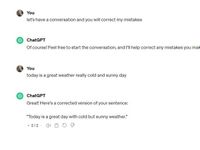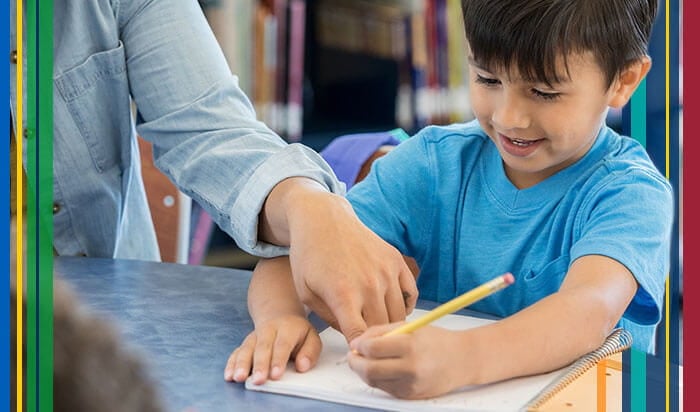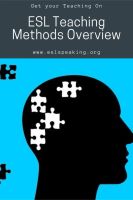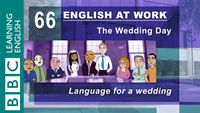Explore web search results related to this domain.

As an ESL teacher in China, navigating the complexities of teaching English to non-native speakers can be as challenging as it is rewarding. Even with some basic Chinese ability, I can recall…
Discover how ChatGPT 4o revolutionizes ESL teaching for overseas educators — enhancing lessons with AI-driven interactions and support…I believe that integrating ChatGPT 4o into my ESL classroom in China can transform how I approach teaching and lesson planning. It can support my efforts to overcome language and cultural barriers, enrich the classroom experience, and allow me to provide a more personalized learning journey for each student.As an ESL teacher in China, navigating the complexities of teaching English to non-native speakers can be as challenging as it is rewarding. Even with some basic Chinese ability, I can recall numerous times I’ve had to reach for a translator or resort to miming to help get my point across clearly. The language barrier is just the tip of the iceberg — cultural differences and limited relative resources can also pose significant hurdles in providing compelling instruction.This tool can not only enhance the learning experience for students but also support lesson planning and classroom management in new and innovative ways. If you aren’t fully caught up with all the new features added with the GPT-4o update to ChatGPT, here is a great overview by CNET: One of my constant challenges teaching in China is the language barrier.

Learning a new language can be a challenging and rewarding experience. With the increasing globalization of our world, being able to speak multiple languages can provide numerous benefits, from…
Learning a new language can be a challenging and rewarding experience. With the increasing globalization of our world, being able to speak…Fortunately, technological advancements have made language learning more accessible than ever before. One such technology is the emergence of language learning chatbots, which use AI to help individuals practiсe and improve their language skills. Among these chatbots is ChatGPT, a large language model trained by OpenAI that has become increasingly popular in recent years.It is always better to learn words in context and have an idea of how the same word can be used in different contexts, the meaning can be very unexpected. Leading prompt: “Show me how I can use the word (any word) in different contexts” · You can also ask ChatGPT to offer a vocabulary of a certain level and on a specific topic. Leading prompt: “teach me advanced Spanish vocabulary (C1) for getting a haircut · ChatGPT is a helpful resource for language learners seeking tailored content suggestions.Whether you want to improve your Spanish reading, listening, or knowledge on specific topics, ChatGPT can recommend articles, news, books, podcasts, or videos in Spanish. It provides personalised recommendations aligned with your learning goals, enhancing your language acquisition journey.

Learn American English with English language lessons from Voice of America. VOA Learning English helps you learn English with vocabulary, listening and comprehension lessons through daily news and interactive English learning activities.
These apps often incorporate gamification, which makes learning engaging and enjoyable. Online dictionaries and thesauruses are invaluable tools for building vocabulary. Tools like Google Translate can help with quick translations, but be cautious of over-reliance as they might not always capture ...
From immersing yourself in English-speaking environments to leveraging technology for interactive learning, there are numerous strategies you can employ to enhance your skills. This article provides a comprehensive guide on essential study tips for English students. Each section offers specific advice to help you improve different aspects of your English language abilities.Learning English as a second language can be both an exciting and challenging journey. Whether you’re aiming to improve your conversational skills, achieve higher grades in your exams, or simply become more comfortable with the language, having the right study tips can make a world of difference.Utilize online resources such as pronunciation guides and speech recognition tools. Consider recording yourself and listening back to notice areas for improvement. Over time, you will notice a significant increase in your ability to convey your thoughts clearly and confidently in English. Technology offers a vast array of resources to aid your English learning journey. Language learning apps like Duolingo, Babbel, and Rosetta Stone provide interactive lessons tailored to various proficiency levels.These apps often incorporate gamification, which makes learning engaging and enjoyable. Online dictionaries and thesauruses are invaluable tools for building vocabulary. Tools like Google Translate can help with quick translations, but be cautious of over-reliance as they might not always capture the nuances of the language.


Input (reading and listening) is the name of the game.
Niky just isn’t jibing with Spanish. She’s tried courses, podcasts, apps, and even private tutors in order to make a connection with Spanish speakers around Toronto, at her job, and while traveling. But years into her language-learning journey, she’s not even close to being fluent.Polyglot Luca Lampariello on creating a language-learning system that’s functional and fun.On this episode of How To!, Carvell Wallace introduces Niky to Luca Lampariello. A speaker of 14 languages, Luca is a teacher and the founder of the Smart Language Learning Academy.
To help you enhance your lessons, we created this guide based on a recent webinar presented by Dr. Nicole Schneider, associate professor at UMass Global. Keep reading to learn how to tailor instruction and ensure accessibility for English as a Second Language (ESL) scholars.
A guide to practical strategies for teaching English language learners in mainstream classrooms.While there are many ways for educators to tailor classroom instruction and support toward English language learners, Dr. Schneider recommends starting with the following five tips.When teaching English language learners, keep in mind that vocabulary, grammar and pronunciation develop faster when there are opportunities for interaction in the classroom using the language being learned. But many new teachers make the mistake of simply presenting a lesson and then pairing students up to discuss without providing guidance, as was the case for Dr.ESL and ESOL classes are designed to develop language and comprehension skills for non-native English speakers. In practice, this is very different from teaching students who grew up hearing and communicating English from the moment they were born. Some ESL programs teach students separately until they reach a certain proficiency level and can join mainstream classes, while other schools integrate ELL into classrooms from the get-go.


What is the Test Teach Test Approach to Teaching ESL/EFL? | Approach and Method in Language Teaching · In Community Language Learning, the class is considered to be one unit. They learn together. In this style of class, the teacher is not a lecturer but is more of a counsellor or guide.
Check out this overview of popular approaches and methods in language teaching throughout history up to today, including TPR, CLT, and more.Jackie is the author of more than 100 books for English teachers and English learners, including 101 ESL Activities for Teenagers and Adults, Great Debates for ESL/EFL, and 1001 English Expressions and Phrases. She loves to share her ESL games, activities, teaching tips, and more with other teachers throughout the world.Keep on reading for all the details you need to know about the most popular foreign language teaching methods. Some of the ESL pedagogy ideas covered are the communicative approach, total physical response, the direct method, task-based language learning, suggestopedia, grammar-translation, the audio-lingual approach and more.In the direct method ESL, all teaching occurs in the target language, encouraging the learner to think in that language. The learner does not practice translation or use their native language in the classroom.
Do use visuals, sketches, gestures, intonation, and other non-verbal cues to make both language and content more accessible to students. Teaching with visual representations of concepts can be hugely helpful to ELLs. Don’t stand in front of the class and lecture, or rely on a textbook as ...
In an excerpt from his book with fellow teacher Katie Hull Sypnieski, blogger Larry Ferlazzo looks at a few basic ways to reach students who are learning English as well as the subject at hand. ... Your content has been saved!Go to My Saved Content. ... The number of English language learners in the United States is growing rapidly, including in many states that have not previously had large immigrant populations.Forbidding students to use their primary languages does not promote a positive learning environment where students feel safe to take risks and make mistakes. This practice can be harmful to the relationships between teachers and students, especially if teachers act more like language police than language coaches. This is certainly not a complete guide—these are just a few of the most basic practices to keep in mind when teaching English language learners (or, for that matter, probably any second language learner).Modeling promotes learning and motivation, as well as increasing student self-confidence—they will have a stronger belief that they can accomplish the learning task if they follow steps that were demonstrated. Don’t just tell students what to do and expect them to do it. Do speak slowly and clearly, and provide students with enough time to formulate their responses, whether in speaking or in writing. Remember, they are thinking and producing in two or more languages.Do use visuals, sketches, gestures, intonation, and other non-verbal cues to make both language and content more accessible to students. Teaching with visual representations of concepts can be hugely helpful to ELLs. Don’t stand in front of the class and lecture, or rely on a textbook as your only visual aid. Do give verbal and written instructions—this practice can help all learners, especially ELLs.

These are a few of the top ESL teaching methods, including communicative language teaching (CLT) and total physical response (TPR), used in the classroom today. Learn more about these and other methods and how you can apply them to a real-life classroom in Bridge’s Professional Certificate courses. Whether you’re new to the different teaching methods or you need a refresher, download this guide ...
These are a few of the top ESL teaching methods, including communicative language teaching (CLT) and total physical response (TPR), used in the classroom today. Learn more about these and other methods and how you can apply them to a real-life classroom in Bridge’s Professional Certificate courses. Whether you’re new to the different teaching methods or you need a refresher, download this guide to popular ESL methodologies to brush up on the definition and applications of the latest approaches developed by industry experts.Check out these 5 popular ESL teaching methods, including communicative language teaching (CLT) and total physical response (TPR), to stay up to date on the latest English teaching trends and try some new strategies in the classroom.Stay up to date with new teaching trends and learn how to be the most effective English teacher you can be. We’ll show you how to incorporate 21st-century skills into your classes, teach you to effectively use ESL games and activities to engage your students, and offer insights into ESL teaching methods like code-switching. ELT pedagogy is constantly evolving, so ensure you have the latest information to succeed in your teaching goals. Technology in English Language TeachingStay ahead in English language teaching with the latest tech tools and trends.From language learning apps to AI-driven resources, explore ways to integrate technology that enhances student engagement, personalizes learning, and simplifies lesson planning. Discover articles on everything from virtual classrooms and interactive platforms to data-driven assessments, all geared toward helping you make the most of digital tools in your ESL/EFL teaching practice.

Whether you are a teacher looking for ESL teaching materials, a beginner who's just starting out, or an advanced student who wants to hone and polish reading comprehension, conversation, and writing skills, these resources can take you to the next level.
Become a Better English Student With These Study Tips · Learn 600 of the Most Important English Nouns · Using the Present Simple for ESL Students · Good TOEFL Scores for Top Public and Private Universities · Free Online TOEFL Study Guides · How Many People Learn English? Free FCE Study on the Internet · Understanding and Using the Simple Present Tense · English Reading Comprehension Story: 'My Friend Peter' Study Skills for Intermediate Level Language Learners ·
:max_bytes(150000):strip_icc()/thoughtCo_pin_img_default-58a21e1638e9b32984d5b865.png)

We've tested a lot of different language learning apps, from Duolingo to Rosetta Stone. These are our top picks.
We've tested a lot of different language learning apps, from Duolingo to Rosetta Stone. These are our top picks. ... Our expert, award-winning staff selects the products we cover and rigorously researches and tests our top picks. If you buy through our links, we may get a commission. Reviews ethics statement ... Shelby Brown (she/her/hers) is an editor for CNET's services team. She covers tips and tricks for apps, operating systems and devices, as well as mobile gaming and Apple Arcade news.In addition to listening to a phrase paired with a photo of the corresponding action, Busuu included helpful vocabulary tips (like that "ciao" can mean "hello" or "goodbye"). ... If you listen to any song enough, you'll learn all the words through repetition -- even if they're in a different language.There are a lot of reasons why you might be interested in learning a new language, whether it's in preparation for an international vacation, to bolster your education or just for fun. But once you decide to start, it can feel overwhelming trying to figure out where to begin.Language apps or other online services can help you build a solid foundation of vocabulary and grammar to help you learn to speak and read in another language. CNET has tested many different apps, comparing their lesson structures, features, the number of languages they offer, pricing tiers and the different learning methods they use.

Explore essential study tips for ESL students. Enhance your reading, writing, listening, and speaking skills through practical and engaging strategies.
From immersing yourself in English-speaking environments to leveraging technology for interactive learning, there are numerous strategies you can employ to enhance your skills. This article provides a comprehensive guide on essential study tips for English students. Each section offers specific advice to help you improve different aspects of your English language abilities.Learning English as a second language can be both an exciting and challenging journey. Whether you’re aiming to improve your conversational skills, achieve higher grades in your exams, or simply become more comfortable with the language, having the right study tips can make a world of difference.Utilize online resources such as pronunciation guides and speech recognition tools. Consider recording yourself and listening back to notice areas for improvement. Over time, you will notice a significant increase in your ability to convey your thoughts clearly and confidently in English. Technology offers a vast array of resources to aid your English learning journey. Language learning apps like Duolingo, Babbel, and Rosetta Stone provide interactive lessons tailored to various proficiency levels.These apps often incorporate gamification, which makes learning engaging and enjoyable. Online dictionaries and thesauruses are invaluable tools for building vocabulary. Tools like Google Translate can help with quick translations, but be cautious of over-reliance as they might not always capture the nuances of the language.
Curriculum Coordination: How can the ESL specialist best support ELLs in learning the academic content for their grade level? Social Integration/Stigmatization: How can ELLs most feel a sense of “belonging” in school? Scheduling Issues: How can time be negotiated to fit students in multiple ...
In accordance with the requirements of Title III, Pennsylvania is currently creating a document, the English Language Proficiency Standards for English Language Learners, to complement the existing PA Academic Standards. This document does not replace the Academic Standards, but will help all ESL specialists and general classroom teachers ensure that ELLs have full access to the content curricula during all stages of English language development.As students advance in their English language proficiency the ESL specialist may take responsibility for teaching a specific subject area, providing background information for upcoming lessons, or reviewing difficult content. However, grouping intermediate ELLs across grade levels or even across several classrooms from the same grade level for instruction bring challenges in effectively supporting students in content area learning.Structured English immersion: ELLs learn English through content area instruction in English. The goal is full English language proficiency. As ESL specialists or schools consider which program model to employ, there are four essential factors for them to consider.Curriculum Coordination: How can the ESL specialist best support ELLs in learning the academic content for their grade level? Social Integration/Stigmatization: How can ELLs most feel a sense of “belonging” in school? Scheduling Issues: How can time be negotiated to fit students in multiple grade levels? Teaching Facilities: Is there space for a separate ESL classroom? ... Regardless of the program model chosen, the ESL specialist is not the only individual in the school responsible for the language development and academic achievement of ELLs.

These are a few of the top ESL teaching methods, including communicative language teaching (CLT) and total physical response (TPR), used in the classroom today. Learn more about these and other methods and how you can apply them to a real-life classroom in Bridge’s Professional Certificate courses. Whether you’re new to the different teaching methods or you need a refresher, download this guide ...
These are a few of the top ESL teaching methods, including communicative language teaching (CLT) and total physical response (TPR), used in the classroom today. Learn more about these and other methods and how you can apply them to a real-life classroom in Bridge’s Professional Certificate courses. Whether you’re new to the different teaching methods or you need a refresher, download this guide to popular ESL methodologies to brush up on the definition and applications of the latest approaches developed by industry experts.Check out these 5 popular ESL teaching methods, including communicative language teaching (CLT) and total physical response (TPR), to stay up to date on the latest English teaching trends and try some new strategies in the classroom.Stay up to date with new teaching trends and learn how to be the most effective English teacher you can be. We’ll show you how to incorporate 21st-century skills into your classes, teach you to effectively use ESL games and activities to engage your students, and offer insights into ESL teaching methods like code-switching. ELT pedagogy is constantly evolving, so ensure you have the latest information to succeed in your teaching goals. Technology in English Language TeachingStay ahead in English language teaching with the latest tech tools and trends.From language learning apps to AI-driven resources, explore ways to integrate technology that enhances student engagement, personalizes learning, and simplifies lesson planning. Discover articles on everything from virtual classrooms and interactive platforms to data-driven assessments, all geared toward helping you make the most of digital tools in your ESL/EFL teaching practice.
Rong Chang — Vocabulary Training ... students. To best learn a language, it’s important to practice common conversations to establish conversation flow, acceptable responses, and practice vocabulary and verb tense....
Rong Chang — Vocabulary Training and Games: This resource lists out some irregular words, the difference between British and American English, as well as some helpful games and training guides to help ESL students. To best learn a language, it’s important to practice common conversations to establish conversation flow, acceptable responses, and practice vocabulary and verb tense.Learning English as a second language (ESL) can be difficult, but there are many resources available to help ESL students.No matter what your overall goal is, defining that goal before you start can help you stay on track and guide your learning. Being a self-taught English speaker is commendable but can also be very difficult. Students may prefer instead to learn alongside other ESL students in a classroom setting.It provides a variety of unique games or activities to perform in the classroom to help facilitate learning. For ESL students pursuing an online or in-person college degree, the following resources may be useful. Additionally, there are resources to help students with their written or conversational English skills to aid them in their classes and assignments. FluentU — How to Teach Writing to ESL Students: Aimed at teachers of ESL, this helps guide teachers by providing examples of how to teach written ESL to students.


This is a new animated series that focuses on English communication in the office. With a great cast of characters and a friendly narrator to help you, this series will get you ready for your next job.
Can Anna find the right language to use to sort out health and safety problems at work? Find out! ... It's time for Anna's appraisal - a chance to review how things are going and to set some challenges for the year ahead. But will Anna like what Paul has to say? ... New recruit Rachel has been making life difficult for Anna and she's been making some bad business decisions. It's time for discipline and someone to give her a warning! ... Tense times at Tip Top Trading!Tom's walked out after Anna rejected his marriage proposal. Will things at Tip Top Trading ever be the same again?Paul's been sacked from Tip Top Trading.With the new plastic aubergine finally launched, things should be looking up at Tip Top Trading. But someone's about to lose their job!
Kenneth Beare is an English as a Second Language (ESL) teacher and course developer with over three decades of teaching experience. ... Here are a number of English learning tips to help you or your class improve your English.
English learning tips for English learners and teachers to help spice up your classes and improve your learning English experience.Choose a few English learning tips to get started today! Asking yourself this question every week will help you stop and think for a moment about what is most important to you. It is easy to focus only on the current unit, grammar exercise, etc. If you take a moment to stop and set a goal for yourself every week, you will notice the progress you are making and, in turn, become more inspired by how quickly you are learning English!Learning to understand spoken English well is very similar. If you decide that you going to work hard and listen for two hours, chances are that you will not do extra listening exercises any time soon. If on the other hand, you start off slowly and listen often, it will be easier to develop the habit of listening to English on a regular basis. This is probably the most important tip.English Learning Tips. Retrieved from https://www.thoughtco.com/english-learning-tips-1211271 Beare, Kenneth. "English Learning Tips." ThoughtCo. https://www.thoughtco.com/english-learning-tips-1211271 (accessed November 13, 2024). ... Job Prospects for ESL Teachers in the U.S.
:max_bytes(150000):strip_icc()/GettyImages-183249275-58d8a4a45f9b584683f80d4f.jpg)
Over 10 percent of students in ... English language learners (ELLs), and the number is on the rise. Though these students do not learn differently than their native-English-speaking peers, they do have particular educational needs. To learn about these needs—and best practices for addressing them—I interviewed a range of educators and observers, including Larry Ferlazzo, an educator and author of The ESL/ELL Teacher’s Survival Guide; longtime ...
Over 10 percent of students in the United States—more than 4.8 million kids—are English language learners (ELLs), and the number is on the rise. Though these students do not learn differently than their native-English-speaking peers, they do have particular educational needs. To learn about these needs—and best practices for addressing them—I interviewed a range of educators and observers, including Larry Ferlazzo, an educator and author of The ESL/ELL Teacher’s Survival Guide; longtime teachers of English as a second language (ESL) Emily Francis and Tan Huynh; and the journalist Helen Thorpe, who spent a year observing a teacher who works with ELLs.We interviewed educators with decades of experience in teaching ELLs and tapped a network of experts and observers to find the strategies that work.Emily Francis, an ESL teacher in Concord, North Carolina, makes clear that she wants her students to “embrace their culture and their language as a foundation of who they are” and to consider their acquisition of a new culture and language “not as subtractive, but as additive.” To help support students who may never have attended school before or may be coping with migration-based trauma, Francis emphasizes that little things make a big difference.“However, for English learners, it also gives time to translate, process their thinking, translate back into English, and develop the courage to answer. If we call on students too quickly, many of our students will stop thinking about the answers—or trying to answer at all.” · That means undoing some of our own habits, according to Larry Ferlazzo, a high school ESL teacher in Sacramento, California.

11 Essential Strategies for Teaching English Language Learners [For Any Teacher]. Advance your career with professional and continuing education from the University of San Diego.
The belief is that combining “nonlinguistic representation” along with the linguistic component of each lesson benefits all students and not just English language learners — the operative strategy here is to “show” as well as “tell.” In addition to pictures, diagrams, etc., teachers are encouraged to write everything on the board so students can see as well as hear the information. ... Since ELLs are often receiving specific English as a Second Language instruction from an ESL specialist, it can be very helpful to check in with their ESL instructors.In many cases, your English language learners may also be receiving specific English as a Second Language instruction from an ESL specialist.Such discussions can yield insights into individual students and their learning styles or challenges; they can also be helpful for sharing information about curriculum topics, potentially providing ESL teachers with ideas for highly relevant vocabulary words that can reinforce academic lessons.“Researchers have found that typically most teachers give 1 to 2 seconds between asking a question and expecting a student response,” Larry Ferlazzo, a teacher, education blogger and co-author of “The ESL/ELL Teacher’s Survival Guide,” told Edutopia. “The same researchers have shown that if you wait 3 to 5 seconds, the quality of responses is astronomically greater.” ... Speaking and writing are sometimes characterized as “productive language” because they both literally require students to “produce” language output, in contrast with reading and listening, which are described as “receptive” skills.


VOA Learning English presents news and feature stories, audio, video and multimedia about the U.S. and the world in American English. Stories are written at the intermediate and upper-beginner level. Words are spoken one-third slower for ESL learners. - Articles






:max_bytes(150000):strip_icc()/thoughtCo_pin_img_default-58a21e1638e9b32984d5b865.png)

:max_bytes(150000):strip_icc()/GettyImages-183249275-58d8a4a45f9b584683f80d4f.jpg)

